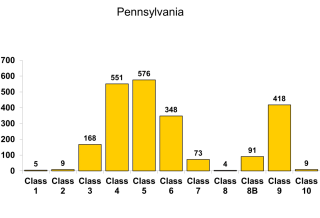Wilkes-Barre City Announces Release of the City’s Updated Public Protection Classification (PPC ®) Program Classification

The City of Wilkes-Barre was recently informed of its updated Public Protection Classification (PPC®) program classification.
To help establish appropriate fire insurance premiums for residential and commercial properties, insurance companies need reliable, up-to-date information about a community’s fire-protection services. Verisk, previously branded as Insurance Services Office (ISO), provides that information through the Public Protection Classification (PPC®) program.
Through the Public Protection Classification (PPC®) program, Verisk evaluates municipal fire-protection efforts in communities throughout the United States. A community's investment in fire mitigation is a proven and reliable predictor of future fire losses. So, insurance companies use PPC information to help establish fair premiums for fire insurance — generally offering lower premiums in communities with better protection. Many communities use the PPC as a benchmark for measuring the effectiveness of their fire-protection services. The PPC program is also a tool that helps communities plan for, budget, and justify improvements.
In Pennsylvania, there are currently 2,252 fire protection areas. Of that, five communities are rated PPC Class 1 communities and nine are rated Class 2. Wilkes-Barre City continues to be categorized as a Class 2 community in Pennsylvania.
The improvements and dedication of the Wilkes-Barre City Fire Department, Emergency Communications, and the resilience and continued investment of the PA American Water system infrastructure have all contributed to the City of Wilkes-Barre remaining a community in the top one percent of fire-protection services in Pennsylvania.
The City of Wilkes-Barre was graded in four areas:
- Emergency Communications: emergency communications systems, including facilities for the public to report fires, staffing, training, certification of telecommunicators, and facilities for dispatching fire departments.
- Fire Department: the fire department, including equipment, staffing, training, and geographic deployment of fire companies
- Water Supply: the water supply system, including the inspection and flow testing of hydrants and a careful evaluation of the amount of available water compared with the amount needed to suppress fires
- Community Risk Reduction: community efforts to reduce the risk of fire, including fire prevention codes and enforcement, public fire safety education, and fire investigation programs

